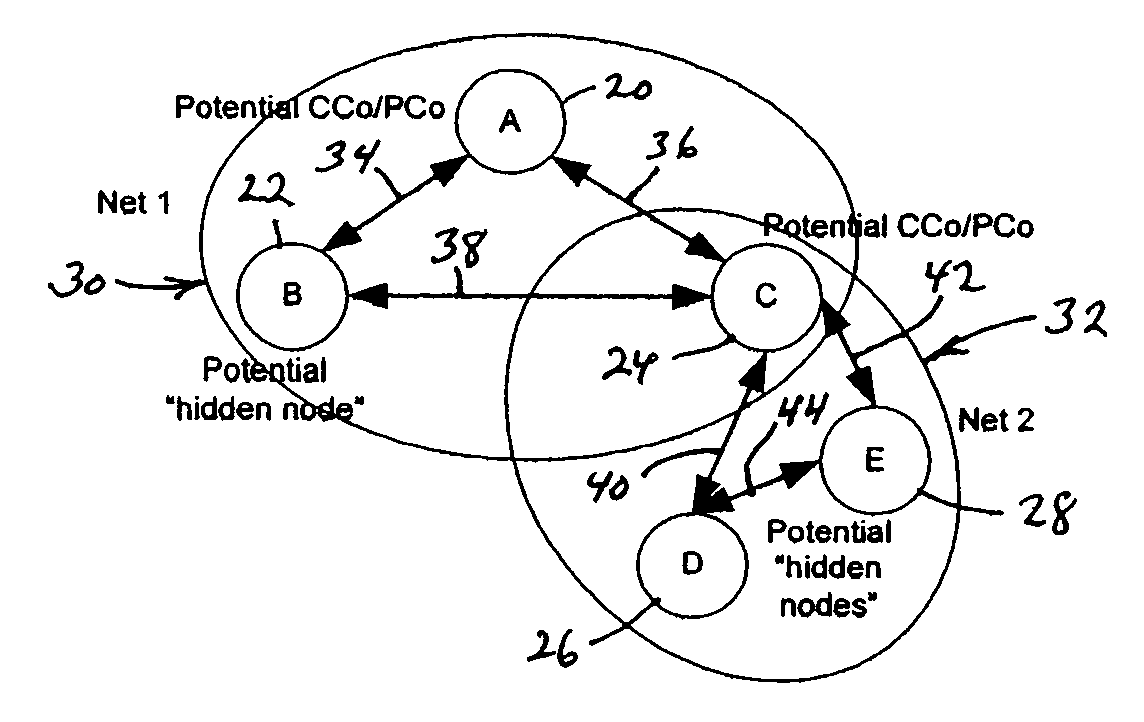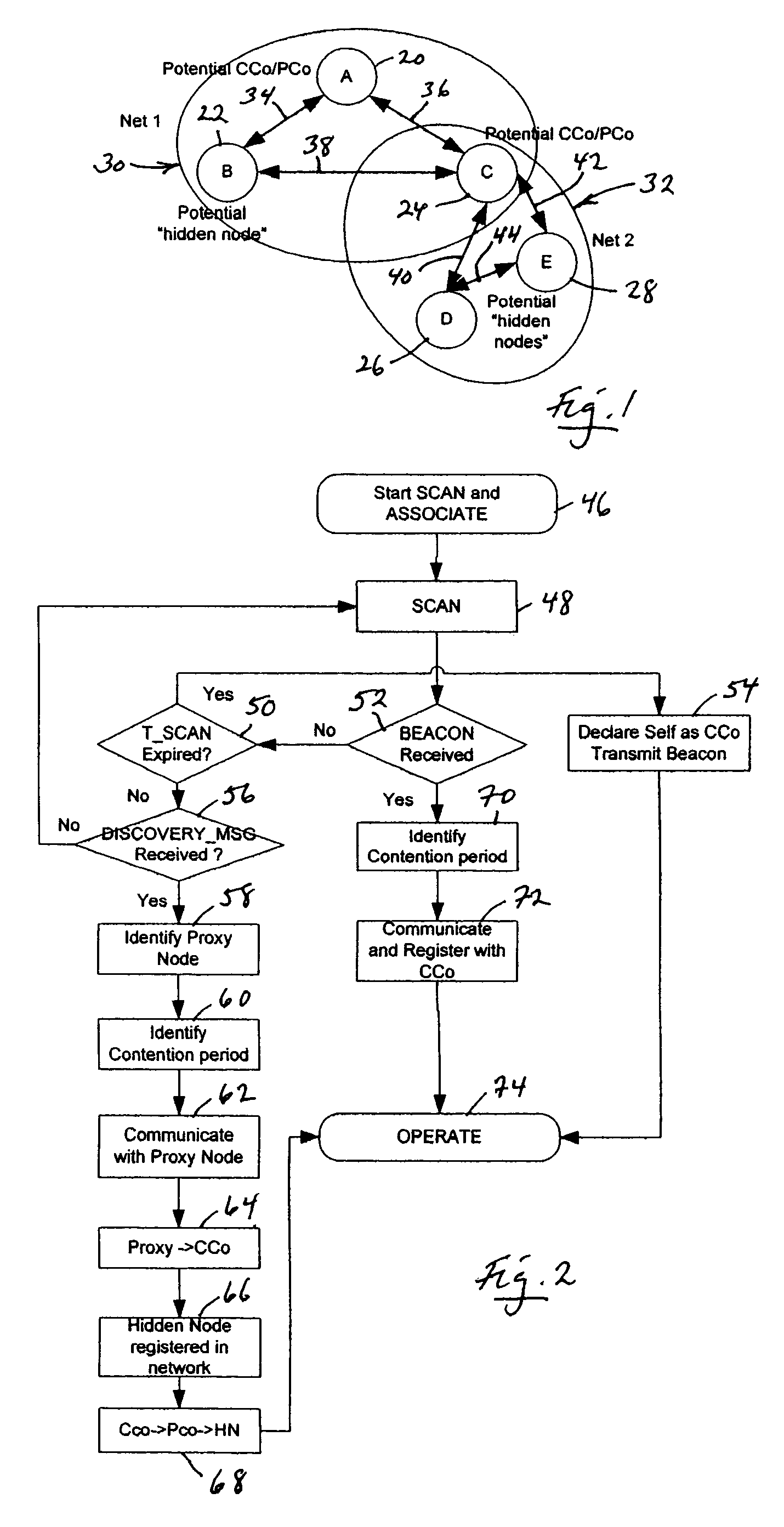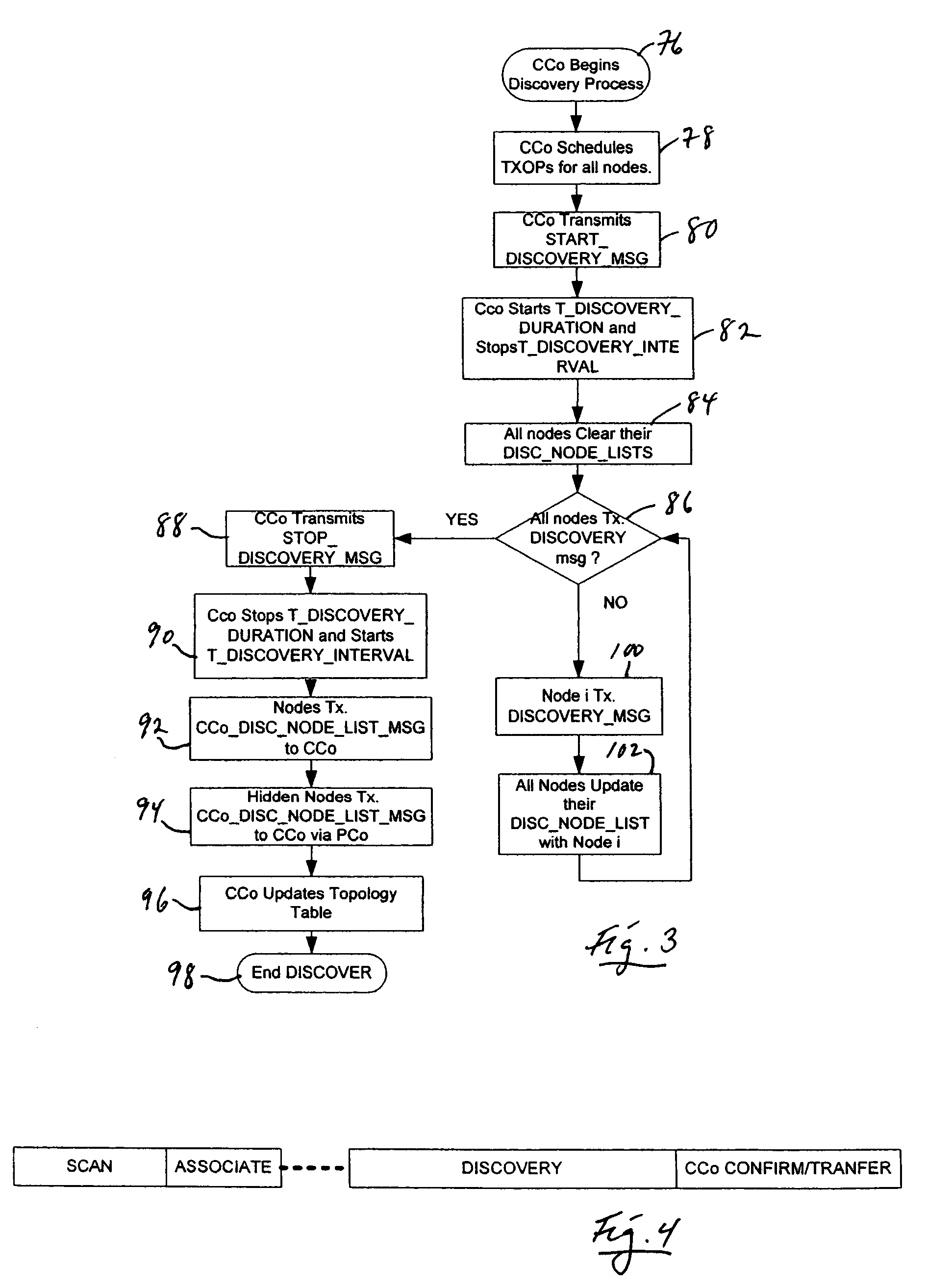Centralized network organization and topology discover in Ad-Hoc network with central controller
- Summary
- Abstract
- Description
- Claims
- Application Information
AI Technical Summary
Benefits of technology
Problems solved by technology
Method used
Image
Examples
Embodiment Construction
[0042]Turning attention now to the drawings, and beginning with FIG. 1, here five nodes 20, 22, 24, 26, 28, also referred to respectively by the letters A, B, C, D, E, are shown organized for illustration purposes, into two possible networks, or network topologies, 30, 32. Topologies 30, 32 are also referred to herein, respectively, also as Net 1 and Net 2. Viable interconnections which relate to these two illustrative organizations are shown at 34 (between A, B), 36 (between A, C), 38 (between B, C), 40 (between C, D), 42 (between C, E), and 44 (between D, E).
[0043]Looking now at these two network topologies, or configurations, and recognizing initially that any of the nodes could be the CCo, Net 1 (30) has node A as the CCo, B and C as hosts within the network, and C as a PCo for the hidden nodes D and E. Net 2 (32) has node C as the CCo, D and E as the hosts within the network, and C as a PCo for the hidden nodes A and B. A network with only A, B and C as host nodes and A as the ...
PUM
 Login to View More
Login to View More Abstract
Description
Claims
Application Information
 Login to View More
Login to View More - R&D
- Intellectual Property
- Life Sciences
- Materials
- Tech Scout
- Unparalleled Data Quality
- Higher Quality Content
- 60% Fewer Hallucinations
Browse by: Latest US Patents, China's latest patents, Technical Efficacy Thesaurus, Application Domain, Technology Topic, Popular Technical Reports.
© 2025 PatSnap. All rights reserved.Legal|Privacy policy|Modern Slavery Act Transparency Statement|Sitemap|About US| Contact US: help@patsnap.com



